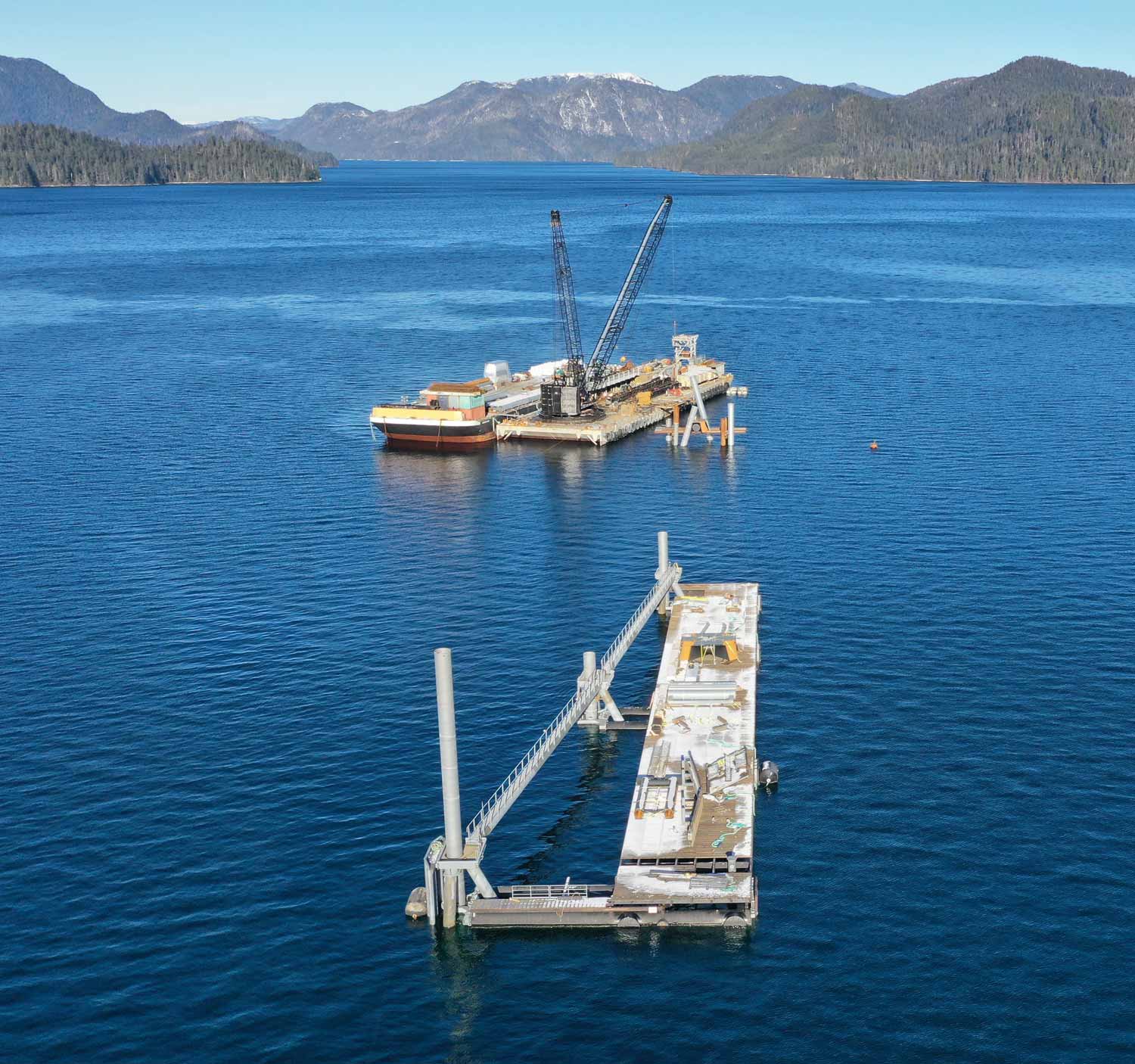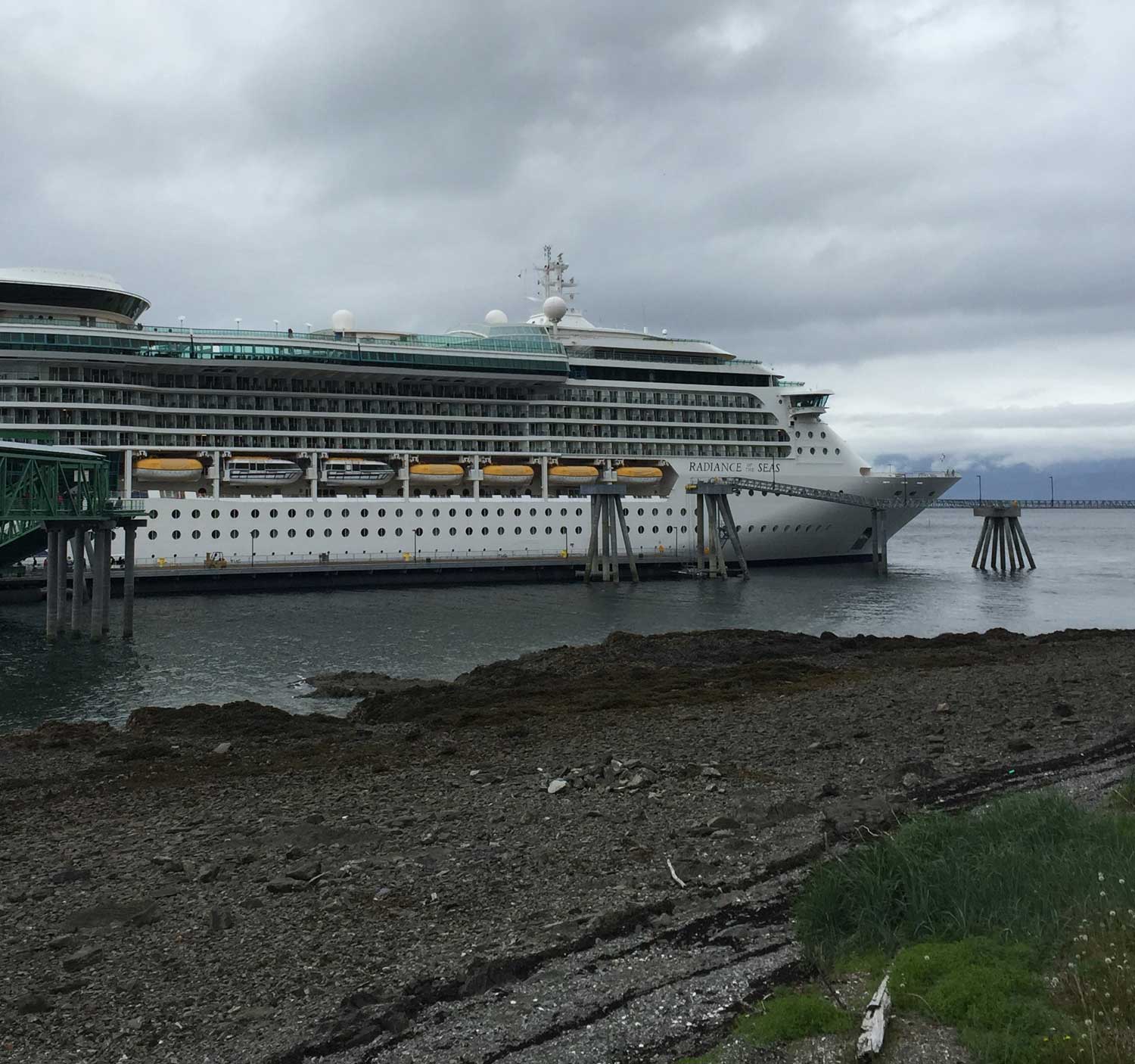Delivering

ocks and ports across Alaska are being revitalized and expanded. Many projects seek to welcome a growing number of tourists who travel to Alaska via cruise ship, while others will make transporting fuel, food, and consumer goods more efficient.
In 2020, Icy Strait Point in Hoonah claimed the Port of the Year award at the 14th annual Seatrade Cruise Awards. However, no tourists had the chance to cruise to the facility last year, since the COVID-19 pandemic halted cruise ship travel to Alaska. A normally buzzing Inside Passage, full of thousands of visitors from around the world, was quiet.
For communities that normally welcome cruise ship guests—Southcentral Alaska, throughout the Interior near Denali, and especially in Southeast Alaska communities—a second season without large ship cruise travel significantly impacts an already fragile tourism industry, says Jeff Samuels, director of policy and communications for the Alaska Travel Industry Association.
“The direct income generated by these visitors for tour operators, restaurants, taxis, and retail stores has substantially diminished,” says Samuels. “Additionally, the lost indirect revenue from dock fees and local sales taxes will affect the budgets for capital projects and basic services in those communities.”
Smaller American-flagged cruise-ship companies that aren’t required to adhere to the Passenger Vessel Services Act, including Lindblad Expeditions, Uncruise Adventures, and American Cruise Lines, will be sailing this summer and bypassing Canadian ports.
The Passenger Vessel Services Act requires foreign-flagged vessels such as Norwegian Cruise Line and Holland America to stop at a foreign port between domestic port calls, so they would typically launch from Canada or stop at a Canadian port along the way. In February, Canada renewed a ban first enacted in March 2020, prohibiting cruise ships from traveling through its waters through February 2022. Both the US House of Representatives and the US Senate passed the Alaska Tourism Restoration Act (ATRA) to allow cruise ships to bypass Canada, and visit Alaska, this summer. President Joe Biden signed the measure in late May and some cruise lines said at the time they’ll be ready to sail in late July.
“With the recent passage of ATRA, we are already hearing from cruise lines that they’ll be ready to go in July and we have faith that with the pent-up demand we’re seeing among travelers will translate into solid bookings for them even with a late start,” says Samuels.
Revenue generated by these smaller ships can’t be compared to the larger international ships, but they will help generate some economic activity for small businesses in tourism, says Samuels.


The facility is also an Associated General Contractors of Alaska Excellence in Construction Award-winning project and an AGC National Build America Merit Award winner in the design-build category. Davis says he thinks the project, which was the first Alaska port to be awarded port of the year, has “an extraordinary amount of positive influence on the community.”
“The entire community of Hoonah, and all of the shareholders and the corporation, are benefiting from the revenue,” Davis says. “And, because it was off the main portion of town, it doesn’t impact the daily lives of everyone in Hoonah, but they get tax revenue for their schools and community.”
While the pandemic has made cruise ship travel nonexistent in Alaska, it’s also made processes for contractors difficult. However, because of the lack of cruise ships during last summer’s season, Davis says at the Ward Cove facility, they “were able to slow down and use some of the time frame where we would have been hosting cruise ships in 2020.”
“The pandemic has made it difficult for people to commit to proceed with contracts,” Davis says. “But, for the most part, the supply chain and the regulatory process has been difficult because there’s so many COVID disruptions.”
Turnagain Marine Construction is working in Sitka on the $6 million Halibut Point cruise dock expansion project, which began in November 2020 and was expected to be completed in June.
Meanwhile, in Ketchikan a project to revitalize the port facility is underway after Ahtna Infrastructure and Technologies, LLC won an $18.8 million contract to build a new dock for Fairweather, a specialty research vessel, according to an April 7 press release from the National Oceanic and Atmospheric Administration (NOAA). The project, which has been in the works for almost twenty years, will also include construction of a new office building, a large floating pier, a steel access trestle, and new power and water utility systems to service the Fairweather and other visiting ships. Ahtna Infrastructure & Technologies, a subsidiary of Ahtna Inc., is expected to make major improvements at the port facility, starting with the removal of the existing pier and related structures.


The project is scheduled to be complete by December 2022, at which point NOAA will have a fully functioning homeport in Alaska. The port will be owned and operated for federal government use, and primarily serve as the base for the Fairweather, a coastal mapping vessel. Other federal vessels may occasionally tie up when space at the port is available, says David Hall, a public affairs specialist with NOAA’s Office of Marine and Aviation Operations. He says NOAA does not expect the presence or absence of cruise ships or other vessels in the area to affect the project.
Located on the Bering Sea, the Port of Nome serves as a crucial hub for Alaska’s arctic, and for surrounding villages that need access to fuel and goods. However, limited marine infrastructure and insufficient draft depths at ports in Nome and the arctic have led to operational inefficiencies, increased safety risks and vessel damage, greater costs for goods and services as well as posing a threat to the long-term viability of the region, according to the US Army Corps of Engineers.
The project will allow large vessels access to Nome’s existing harbor “by enlarging the outer basin and creating a new deep-water basin with a depth of 40 feet,” the release said.
Dredging will be needed to deepen and maintain the basins and channels.
Alaska is a premier cruise destination. Pre-pandemic, the state saw increased tourism projections from a growing cruise industry, which typically welcomes almost 60 percent of all travelers to the state, or more than 1 million visitors, says Samuels. The tourism industry is seeing hopeful signs for recovery in “pent-up demand for travel” and vaccine availability, he says.